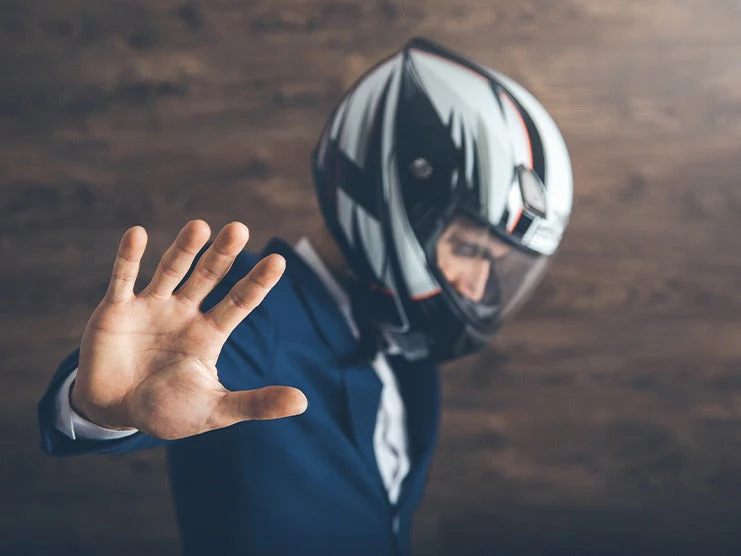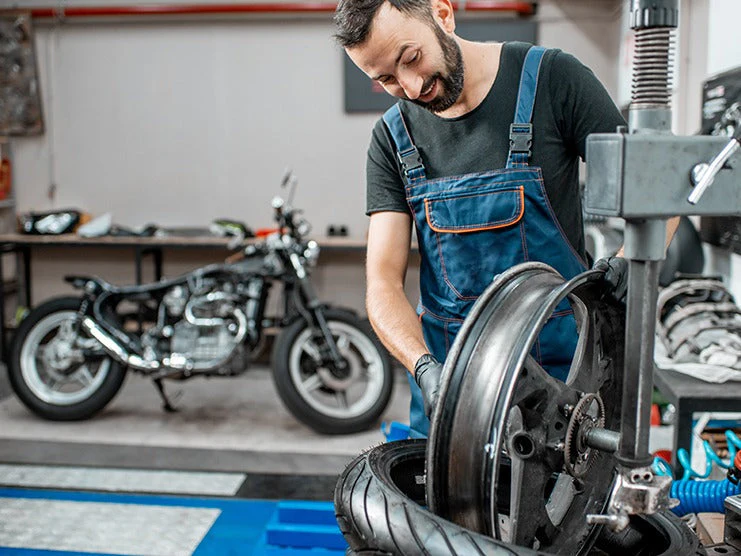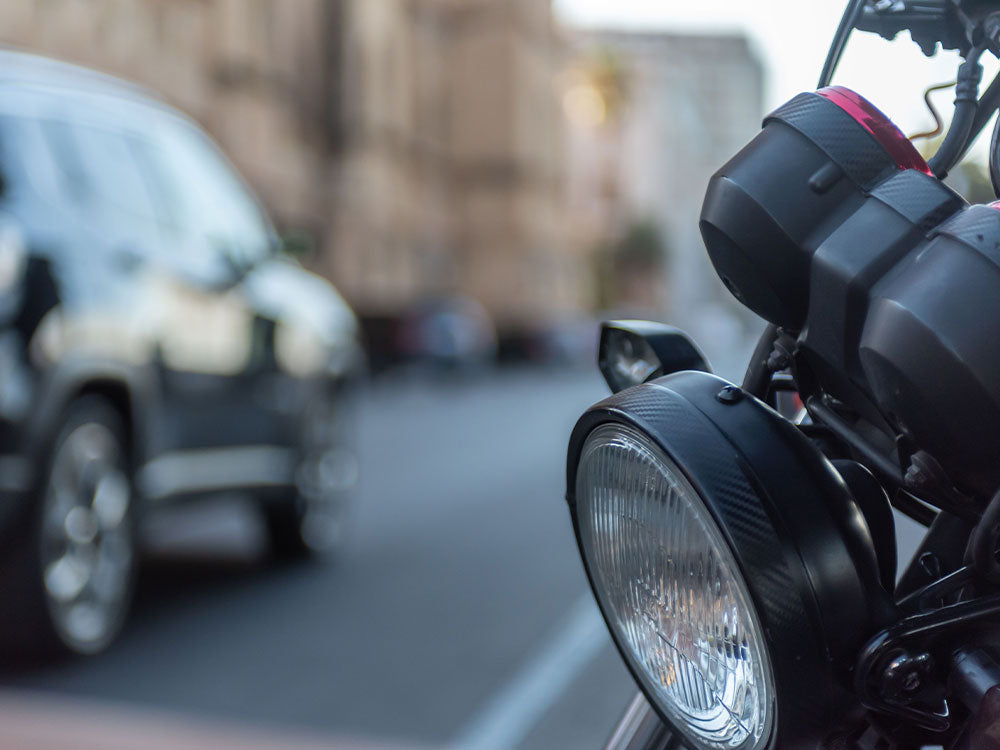Table of Content
Riding a motorcycle can be challenging for novice riders. You can avoid motorcycle crashes and accidents by following traffic laws, riding attentively, and checking your motorcycle’s parts before going for a ride. Unlike cars, motorcycles do not have an enclosed frame, a collision avoidance system, or airbags. To avoid motorcycle crashes, riders can learn to protect themselves by practicing safe riding habits and observing other riders on the road.
The most fatal road accidents involve motorcycles. Motorcycle accidents can cause minor injuries, including scratches and bruises, to severe injuries, including fractured bones, brain damage, internal injuries, and body paralysis. Even if a rider fully recovers from injuries caused by a motorcycle accident, there is a high chance that he/she will suffer from post-traumatic stress disorder (PTSD) or dystychiphobia.
People who suffer from dystychiphobia have a fear of accidents. Meanwhile, PTSD is a condition of constant stress due to a dangerous, scary, or shocking event. Many riders who have been in a motorcycle accident suffer from PTSD which prevents them from riding again. Fear of riding can cause sweating, anxiety, and other mental health issues. It often takes a long time for most riders who have been in a motorcycle accident to overcome their fear of riding. This article provides valuable tips for overcoming your fear of riding after a motorcycle accident.
1. Build Confidence and Start Riding Again

You will develop a fear of riding as you wait to fully recover after getting into a motorcycle accident. After fully recovering from your injuries, try to start riding your motorcycle. Start by riding only for a few minutes, then gradually increase the time you spend riding. Make sure to ride slowly and wear appropriate riding gear. If this is too hard for you, try riding a bicycle instead. It is normal to lose confidence after being involved in a motorcycle crash. If you suffered a near-death experience, take your time to build your confidence back up until you are ready to start riding a motorcycle again.
2. Start with the Easiest Route
Do not go too far on your motorcycle since it can cause anxiety and compel you to head back home. Practice on the shortest and easiest route you are familiar with and have multiple ways to get back home safely. Try to pick a time to practice riding when there is less traffic on the road.
3. Repair the Motorbike as Soon as Possible
As soon as you are physically fit, take your motorcycle to a place to get repairs. Leaving your wrecked motorcycle in your garage with its broken parts and dented fuel tank can trigger feelings of fear and stress. Seeing your motorcycle fully repaired and in good shape will help improve your mental state and help you overcome your fear of riding.
4. Evaluate What Went Wrong
To ensure safer riding in the future, it is important you evaluate what mistakes you might have made that resulted in an accident. Recall the events leading up to the motorcycle crash and think about what you did wrong so you can avoid making them again. Whether an accident was your fault or not, you can use this opportunity to improve your riding skills and better plan how to avoid hazards to better avoid collisions.
5. Take a Motorcycle Safety Riding Course
Enrolling in a motorcycle safety riding course will help you learn how to practice safer behavior on the road and improve your riding skills. You can go to motorcycle training centers that offer training courses suited for those who have been in motorcycle accidents and find it difficult to overcome their fear of riding.
6. Invest in Quality Riding Gear and Equipment
If you plan to ride again, make sure to invest in quality riding gear, including a helmet, gloves, leather jacket, knee caps, and motorcycle boots. Different motorcycle aftermarket parts can improve your motorcycle’s safety features, including crash bars , sissy bars, and fairings. It is also best to ride a motorcycle with an ABS. Before buying new parts and gear, read the reviews on websites and social media platforms to better evaluate their quality.
Also Read: 10 TIPS ON HOW TO SURVIVE A MOTORCYCLE CRASH
7. Make Sure Your Injuries are Recovered Before You Ride Again
Do not start riding again if your injuries have not healed completely and you are not in top physical form. Make sure you are strong enough to balance and ride your motorcycle on roads with heavy traffic. It is okay to be a little nervous when you start riding again but do not panic as it can cause you to lose focus and confidence.
8. Talk to Your Biker Friends and Ride Together
Sharing your thoughts and experience with the motorcycle accident with biker friends can help improve your mental health. Biker friends can help you with motorcycle repairs, build up your confidence, and supervise you while you practice riding your motorcycle. They can also provide you with valuable tips on how to start riding again and share their own experiences with motorcycle crashes.
9. Consult a Professional Mechanic for Motorcycle Repairs and Use Genuine Motorcycle Parts
Get your motorcycle checked and repaired by a professional mechanic to ensure it is back in good condition. You should also install genuine stock and aftermarket parts to ensure a safer riding experience. Avoid installing old and used aftermarket parts or consulting a less qualified mechanic to avoid causing stress and unease.
Also Read: HOW TO CHECK A MOTORCYCLE AFTER A CRASH
10. Do Not Rush, Be Slow and Steady
Be careful when you get back on the road. Accelerate slowly and smoothly, do not turn corners at high speeds, and gently apply the brakes at the right time. Start by riding only a few miles. After your confidence has grown, you can ride for long hours.
11. Takeaway
Overcoming a fear of riding after a motorcycle accident is difficult if the rider is suffering from PTSD and dystychiphobia. However, you can overcome your fear and start riding again using the tips covered in this article. Before you start riding again, make sure you are physically and mentally prepared to get back on the road. Getting your motorcycle repaired by a professional mechanic, consulting your biker friends, practicing by riding slowly, and taking the easiest route can help you regain confidence.
Getting into a motorcycle accident can be fatal if you do not wear quality riding gear. You can also make your riding experience safer by following traffic laws, staying alert while riding and avoiding distractions. It is also important to handle your motorcycle safely f to avoid crashing and causing irreparable damage. Viking Bags has several high-quality parts, including crash bars, sissy bars, and fairings that can protect your motorcycle engine and other parts from getting damaged in a motorcycle crash. Other aftermarket parts include handlebars, comfortable seats, and backrests to ensure a better riding experience. There are also different luggage options, including sissy bar bags, saddlebags, and handlebar bags to ensure a better touring experience.













Leave a comment
All comments are moderated before being published.
This site is protected by hCaptcha and the hCaptcha Privacy Policy and Terms of Service apply.